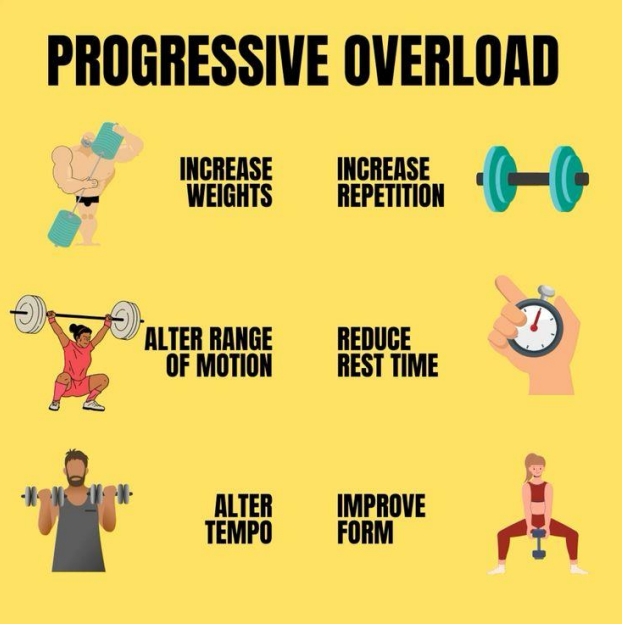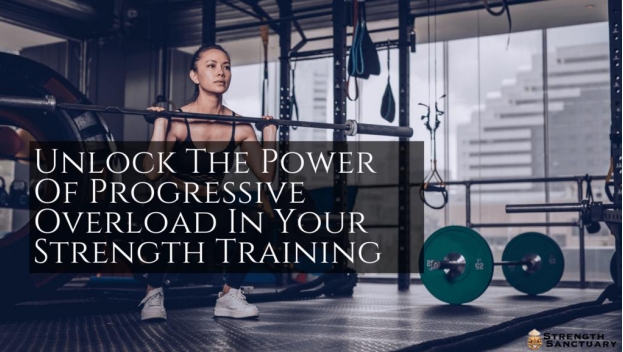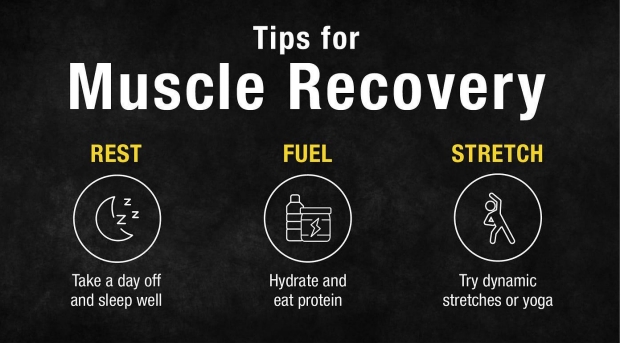You may keep your muscles engaged and stay stronger by varying or intensifying your
workouts. One disadvantage is that if you do progressive overload training too rapidly, it could
be hazardous, therefore you have to take it slowly. If the goal of your strength training is to
achieve results, one of the most crucial rules is progressive overload. Overloading, to put it
simply, is doing more work than you can handle at once then gradually recuperating. Although
there are numerous ways to do this, most fitness enthusiasts restrict overload to the routine
of gradually increasing the weight on the bar or adding a few repetitions over time. Increasing
the weight, you use throughout your exercises and evaluating your progress every week or at
least every training cycle is a popular practice that is acceptable.
The Benefits of Gradual Overload
A very effective technique for boosting your strength training results is progressive overload.
The idea is to keep pushing yourself and improving, so you gradually increase the weight,
repetitions, sets, and other factors. Adding progressive overload to your strength training
regimen has the following three main advantages:

You can optimize the outcomes
By gradually increasing the amount of effort you put in, you can strengthen your body without
experiencing any injury or plateauing brought on by abrupt increases in intensity. This
facilitates more effective goal-achieving.
It helps avoid burnout
You won’t be pushing yourself too hard during every session, so there’s less risk of
overtraining or boredom with the same workout every day.
You will remain inspired
Even on the days you don’t feel like coming to the gym, you’ll be inspired and motivated to
keep going if you see steady progress. When you observe how far your body has progressed
through appropriate gradual improvement.
Four tips for gradually overload it
Boost the resistance
Your muscles can break down, regenerate, and get stronger when you put them under more
stress. Increasing the weight, you’re lifting can help you do this by making your lifts heavier.
Before going on to a larger weight, you should be able to lift the same weight for ten to twelve
repetitions without experiencing any pain. Before increasing the weight, make sure you have
mastered the exercise and have proper form.
Boost endurance with extended exercise
Your workouts must be longer if you want to improve your endurance. For instance, during
strength training, you can perform more repetitions with a less weight. Only after you’ve been
practicing an activity for a few weeks may you increase the amount of repetitions. A
professional personal trainer can also design an endurance-enhancing program for you.
Boost speed
Increasing the speed, or intensity, at which you work out will help you become more fit and
powerful. This can be achieved by exercising more quickly or by taking fewer breaks between
sets. Try using a lesser weight but lifting more quickly to up the tempo. If you find it difficult
to pick up the pace, try working with a lesser weight that you can lift for several sets of ten to
fifteen repetitions.
Boost rounds
Your muscles are under additional stress when you perform more repetitions. Over time, this
may strengthen them. Try going from two sets of 10 reps for each exercise one month to two
sets of 12 reps the following month. Instead of playing just two sets.
What are the progressive overload’s limitations?
The requirement for gradual application is one disadvantage of progressive overload training.
Increasing your workout load or frequency too soon can be risky and can result in injury. With
this kind of training, changes might not be felt as quickly as they would with others. That is,
nevertheless, the safest path forward. Meeting your fitness objectives is most effective and
safest when you work with a professional personal trainer (at a gym or online) who can create
a progressive training program just for you.
Conclusion
You should only begin progressive overload training after you have mastered a particular
exercise technique. Prior to beginning a more intense training program, you should have been
following the same regimen for at least two weeks, if not a month. Reaching your objectives
might be facilitated by working with a licensed personal trainer in person or virtually. They
can design a customized plan to help you safely increase the amount of work you do over
time. Always allow your body to recover from workouts with time off. If you experience
severe pain or injury, stop exercise or reduce the intensity.






